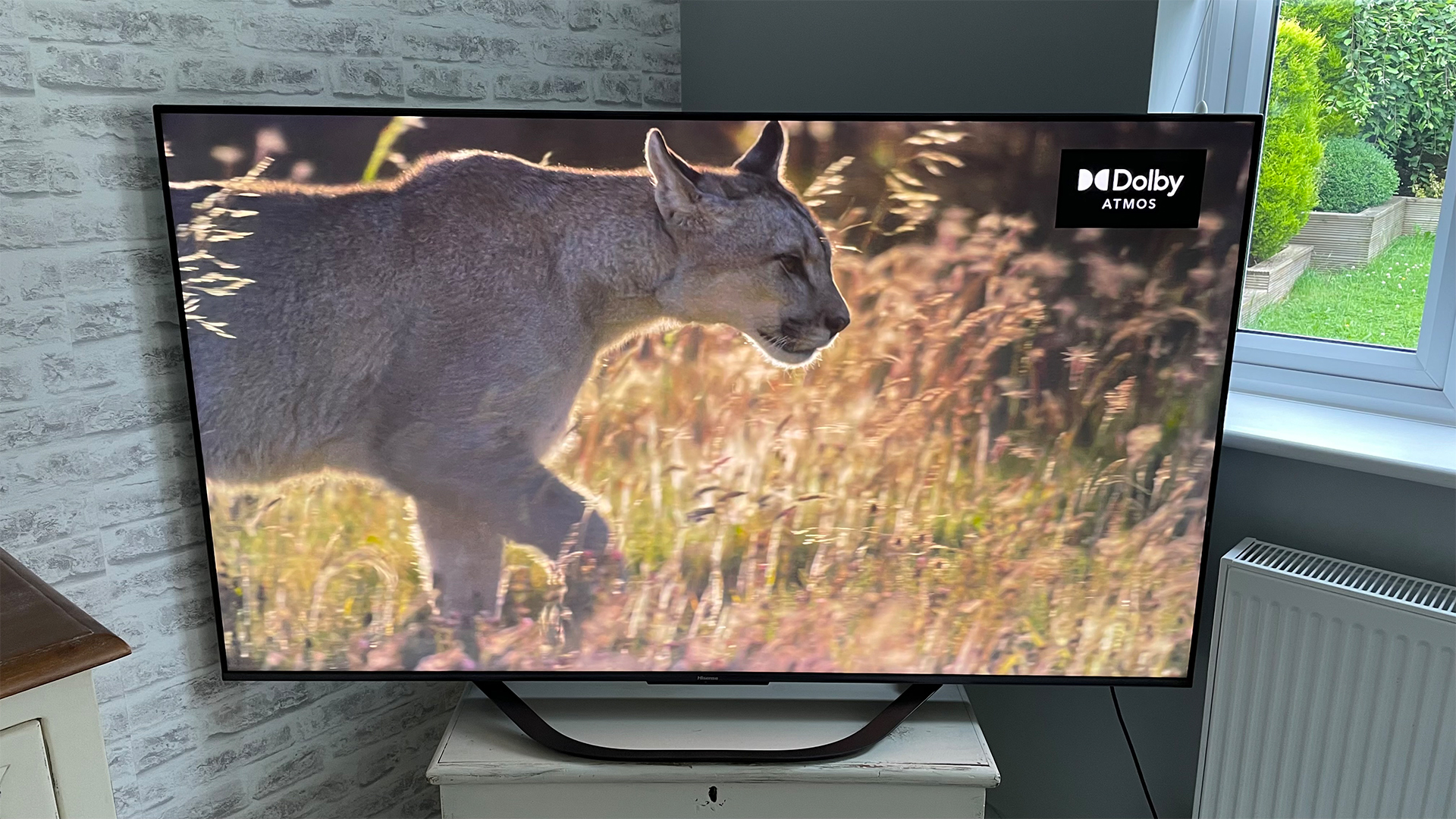What Hi-Fi? Verdict
The U7K reveals a brand capable of learning fast and proves Mini LED doesn’t have to be expensive to work
Pros
- +
Bright, contrast-rich pictures
- +
Extremely loud sound
- +
Good gaming support
Cons
- -
Faint but occasionally wide-spread blooming
- -
Some colour ‘blurring’
Why you can trust What Hi-Fi?
It would be easy to think the TV world is increasingly leaning towards OLED-based technologies, especially this year, as new MLA and QD variations take OLED to a whole new level. In truth, though, the potential for Mini LED screens to combine high brightness with good contrast at aggressive prices means that technology isn’t going anywhere.
As if to prove this point, Hisense has this year expanded its Mini LED offering from the single U8H series it carried in 2022 to three series for 2023. Right in the middle of which sits the 65-inch U7K we’re looking at here.
Price

As Hisense’s mid-range Mini LED TV offering for 2023, the U7K sits between the flagship U8K and more affordable U6K Mini LED models. In the UK, this mid-range positioning is attached to a launch price of £1499 – £200 below and £200 above the equivalent-sized U8K and U6K models respectively.
The U7K TV doesn’t carry as many local dimming zones as the U8K, and as a result isn’t expected to provide as much brightness and contrast.
The 65U7K’s price looks very appealing in the UK compared with the costs of this year’s Samsung and Sony Mini LED TVs, undercutting both by hundreds of pounds for the same-sized screens. Its value goes to another level in the US, where it’s been available for a while longer and can now be bought for just $1049. It’s a similar story in Australia, where the U7K has already dropped from its launch price to AU$1895. It is worth mentioning that both the US and Australian versions come with small desktop feet, whereas the UK version gets a more premium, centrally mounted, open bar style stand.
Design
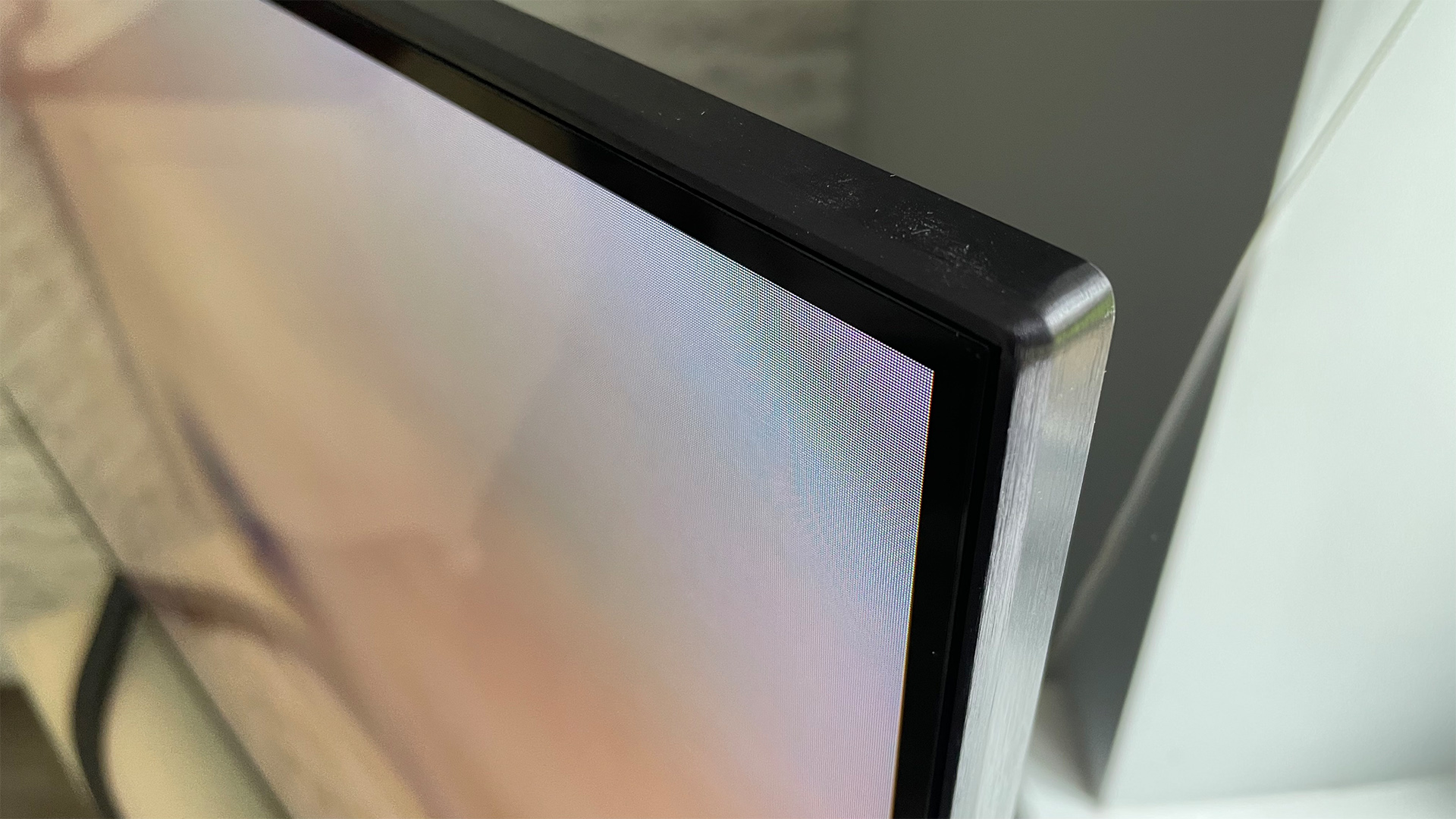
The U7K’s build quality is a touch lightweight and plastic-rich versus the bodywork of those more premium rival Mini LED models mentioned above. That said, it doesn’t feel actually flimsy or insubstantial – three sides of the screen frame, at least, are impressively trim, and the centrally mounted curved bar stand you get in the UK adds a pleasantly high-end touch. More so, at any rate, than the fairly bog-standard feet you get with the TV in the US and Australia.
Be warned, though, that the U7K’s direct lighting system does lead to the TV sticking out quite a bit further over much of its rear than most of today’s slimline TVs.
The latest hi-fi, home cinema and tech news, reviews, buying advice and deals, direct to your inbox.
Accompanying the U7K is a surprisingly premium remote control that combines a sleek, elongated shape with strikingly angular buttons and a crisp silver finish. It’s nice to find this remote sporting direct access buttons for Disney+, Netflix, Prime Video, Freeview Play and YouTube, too.
Features
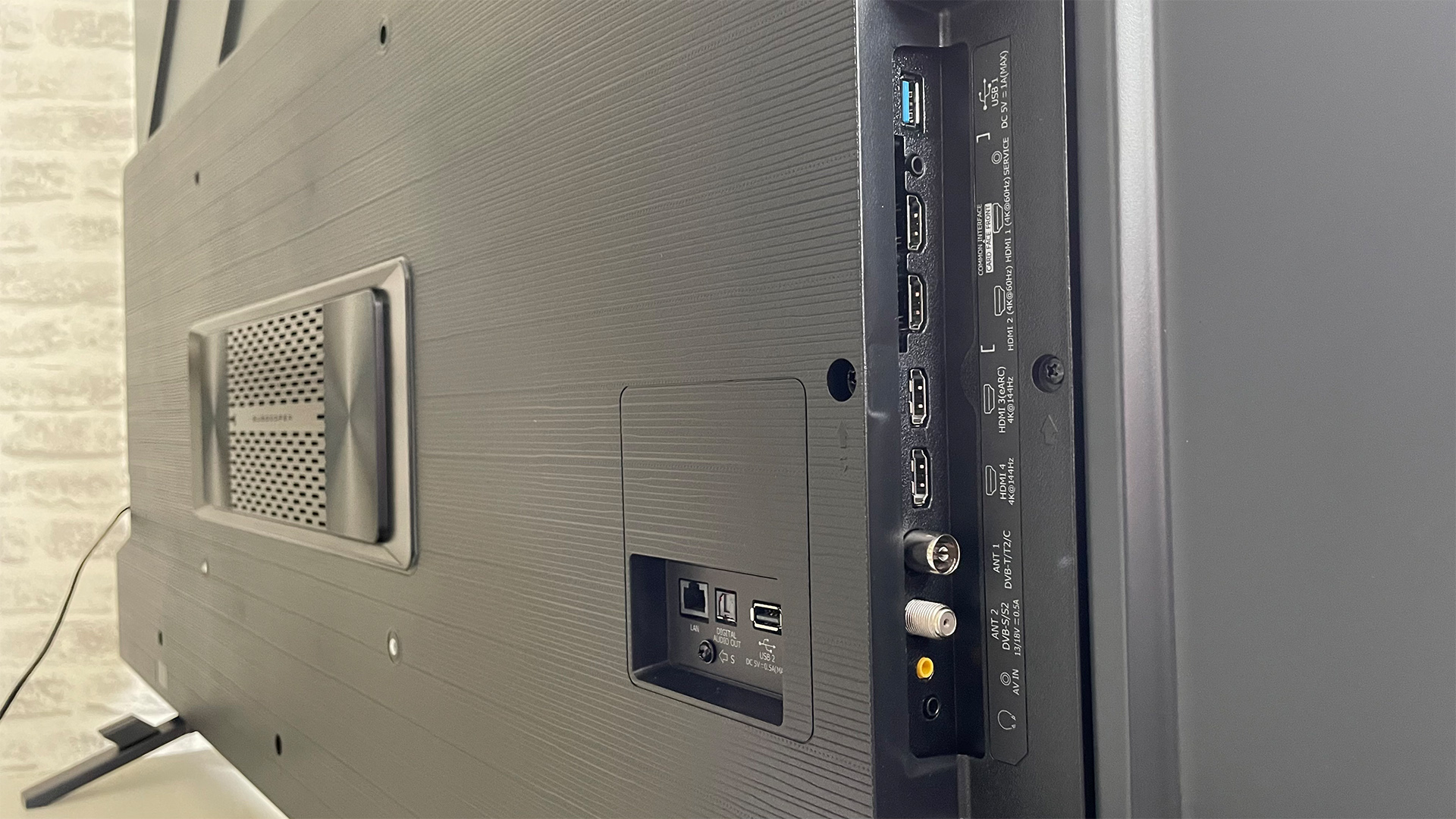
Unlike 2022’s U8H Mini LED model for the UK, the U7K sports the same core screen specifications as its US counterpart. Which is very good news, as it means there’s no repeat of the unfortunate UK U8H situation that found it sporting a low-contrast IPS panel compared with the VA panel of its US equivalent, as well as far fewer local dimming zones.
So in 2023 we also get a contrast-rich VA type of Mini LED panel and, for the 65-inch model at least, what we count to be 384 separately controlled light dimming zones. That’s not a world-beating zone count by any means, but it is more than might reasonably have been expected for such a relatively affordable Mini LED TV.
The hope is, of course, that the Mini LED and local dimming light controls will enable the screen to deliver more brightness and contrast than regular LED TVs.
The lighting system is driven by Hisense’s Hi-View processing – an AI-bolstered system that’s also responsible for the U7K’s noise reduction, motion enhancement and 4K upscaling processing systems, as well as marshalling the set’s Quantum Dot colour system. A system Hisense claims is capable of serving up a billion colours.

Screen size 65 inches (also available in 55in, 75in)
Type Quantum Dot LCD
Backlight Mini LED
Resolution 4K
HDR formats HLG, HDR10, HDR10+, Dolby Vision
Operating system Vidaa (UK and Australia), Google TV (US)
HDMI inputs x4 (2 x 48Gbps HDMI 2.1)
Gaming features 4K/120Hz, VRR, ALLM, Dolby Vision game mode
ARC/eARC eARC
Optical output? Yes
Dimensions (hwd, without stand) 84 x 145 x 7.7cm
As with almost any TV these days, the U7K is able to apply its upmarket lighting system to high dynamic range content made in the HDR10 and HLG formats. Much more unusually, though, it can also play not only both of the premium HDR10+ and Dolby Vision formats, with their extra scene by scene picture information, but also the Adaptive and IQ versions respectively of these advanced formats, where they adapt their images to ambient room conditions.
Many TV brands, including giants LG, Samsung and Sony, only tend to support either HDR10+ or Dolby Vision, not both. So it’s great to see Hisense leaving industry politics behind and simply ensuring that the U7K is equipped to receive the best version of any content you pipe into it.
It’s also great to find this mid-range Mini LED model offering strong support for the latest gaming experiences. Two of its four HDMIs can take in 4K graphics at 120Hz frame rates (actually, 144Hz is possible), as well as supporting VRR and ALLM. The VRR coverage extends to the AMD FreeSync Premium system available on the Xbox Series X, and perhaps best of all given how rare this still is, the U7K has a Dolby Vision game mode that works right up to 4K/120Hz.
Hisense also now provides a dedicated Game menu screen when you’re in play mode, from which you can switch to ultra-wide aspect ratios for compatible PC games or adjust the brightness of dark picture areas exclusively, to make hidden enemies easier to spot. Finally on the gaming front, the U7K takes just 13.1ms to render 60Hz graphics when running in its Game preset – a low enough number to make it hard for you to blame screen lag for coming last in a Call Of Duty deathmatch.
The U7K’s smart service is provided by Hisense’s own Vidaa platform in the UK and Australia, but Google TV in the US. Vidaa is not the downgrade some might presume – it’s not as sophisticated in its presentation or ambitions, but it’s responsive, relatively logically organised, and easy to find your way around. It also now on-boards all of the most popular video streaming systems, and in the UK it’s partnered with Freeview Play to ensure that there’s access to the full suite of terrestrial broadcaster catch-up apps.
Picture

The U7K instantly reveals that Hisense has learned the hard lessons from its 2022 UK Mini LED debut, delivering a picture that substantially outperforms last year’s U8H – despite the U7K sitting a rung lower in 2023’s range.
Black levels, for instance, are on another level. During fades to black, in fact, the screen actually goes truly OLED-like black thanks to the VA panel’s greater efficiency at blocking light when a picture doesn’t need it.
More importantly, dark scenes look more consistent and convincing, as their darkest corners suffer with far less obvious grey mistiness, and there’s much less aggressive interference from backlighting halos around stand-out bright objects than there was with the UK’s U8H.
It helps the U7K’s black levels, too, that the screen is able to put its impressive black levels and black level uniformity right alongside levels of brightness higher and more consistent than those you usually associate with mid-range TVs. This HDR-friendly trait is particularly noticeable with full-screen bright HDR content – the sort of images that OLED TVs inevitably struggle with.
The U7K doesn’t appear quite as bright as its 1000 nit claims, it has to be said, and it does sometimes feel the need in some of its punchiest picture presets to dim small bright highlights of a picture to try and limit the obviousness of potential backlight blooming. Such dimming activity is quite subtly applied though – more subtly than it is by Samsung’s much more expensive Mini LED TVs, in fact. Though those Samsung Mini LEDs do typically deliver much more brightness than even the U7K does, as well as hardly ever suffering any blooming whatsoever.
Although it’s much more restrained than it was on the U8H, the U7K does still suffer with some blooming, despite the best efforts of its Mini LEDs and dimming zones. While this blooming can extend a bit further beyond the edges of stand-out bright image areas than it perhaps should with so many light control features in play, though, it only crops up during really very extreme content – pretty much bright white objects appearing against pitch-black backdrops. Also, the intensity of the stray light is quite faint and becomes very soft and vague at its extremities. So it tends to create more of a slightly misty feel to pictures containing a mix of very dark and very bright content rather than anything that feels like really obvious backlight blooming.
The slight blooming becomes much less noticeable, too, if you maintain a little ambient or bias lighting in your room.
As you would hope with a TV that combines Quantum Dots with good contrast and brightness for a mid-range TV, the U7K also delivers pretty potent colours. Tones across the board look above average (for this price level) rich and vibrant, but also, provided you avoid the TV’s most extreme picture setting, they tend to maintain a good balance, with nothing – not even heavily saturated reds or greens – drawing too much attention to itself.
Subtle blends, skin tones and backgrounds on the U7K are typically good enough to give 4K content a strong sense of sharpness and clarity, and with the exception of some minor softness with 120Hz feeds when using the Game preset, motion looks quite clean and natural – even with 24p sources.
There is, though, an exception to the general sharpness rule. Which is that certain dark but detailed backgrounds, such as some of the wallpapered walls of Georgie’s dingily lit house as he walks down to get the wax from the basement near the start of It Chapter One, can look strangely soft and blurry, with the subtle, dark colours almost feeling as if they’re running into each other. Such activity is very rare, but it can draw your eye away from what should be the main focus of the action when it happens. Interestingly, this is a trait that we also noted in our review of the U8K.
The U7K deserves to have us finish our assessment of its pictures on a positive note, though, which we can do by saying that notwithstanding the minor 120Hz motion softness it works nicely as a gaming display, with crisp, richly coloured images, and that its latest AI-powered processor delivers a very respectable HD upscaling system for such a reasonably priced Mini LED model.
Sound
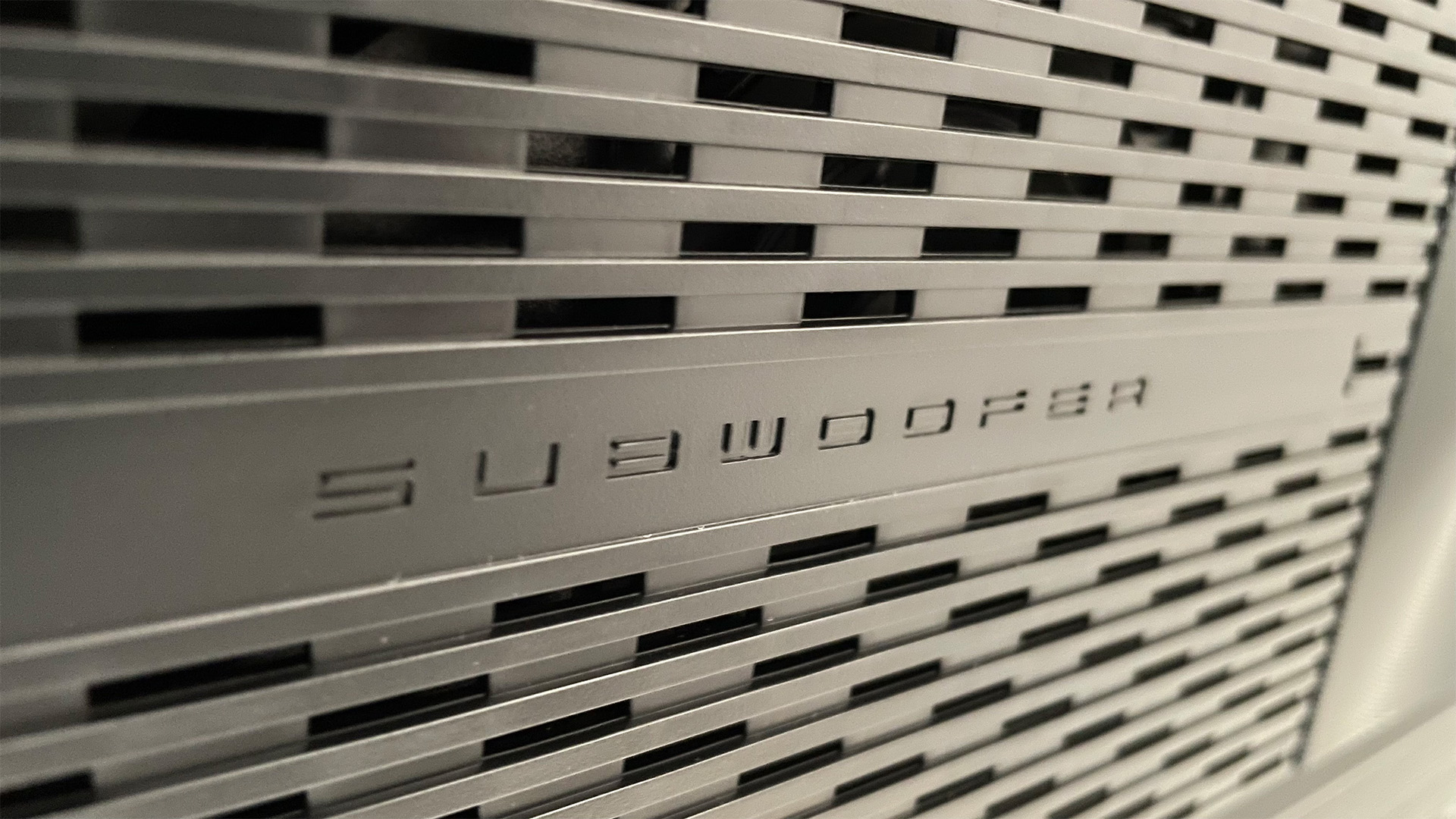
The U7K’s pictures are far from shy and retiring – but they’re positively wall flowers compared to the brashness and sheer loudness of its 40W 2.1 speaker system.
You don’t have to hit even 50 per cent of its maximum volume before it’s pumping out sound levels that regular-sized living rooms and normal hearing capabilities will struggle to comfortably tolerate.
In one way, of course, this is great news. A TV this big with such dynamic pictures deserves to have a potent sound system around to try and seal the cinematic experience deal. Especially when some of the U7K’s raw audio power is used to create a large field of sound that gives the set’s Dolby Atmos decoding a reasonable amount of room to work with when trying to put Atmos details in at least approximations of where they’re supposed to be.
A dedicated subwoofer on the TV’s rear hits deeper than most TV sound systems too, providing a solid foundation for the potent midrange, while trebles sound clear without becoming too prominent.
The only issue is that the U7K’s prodigious power isn’t allied to as much refinement as we’d like. During big soundtrack moments, all that volume can start to sound a bit rough around the edges and undisciplined – as if the TV’s audio enthusiasm is pushing the speakers to the outer limits of their endurance. This can include the usually reliable subwoofer occasionally suffering a little buzzing noise with really extreme bass lines.
Verdict
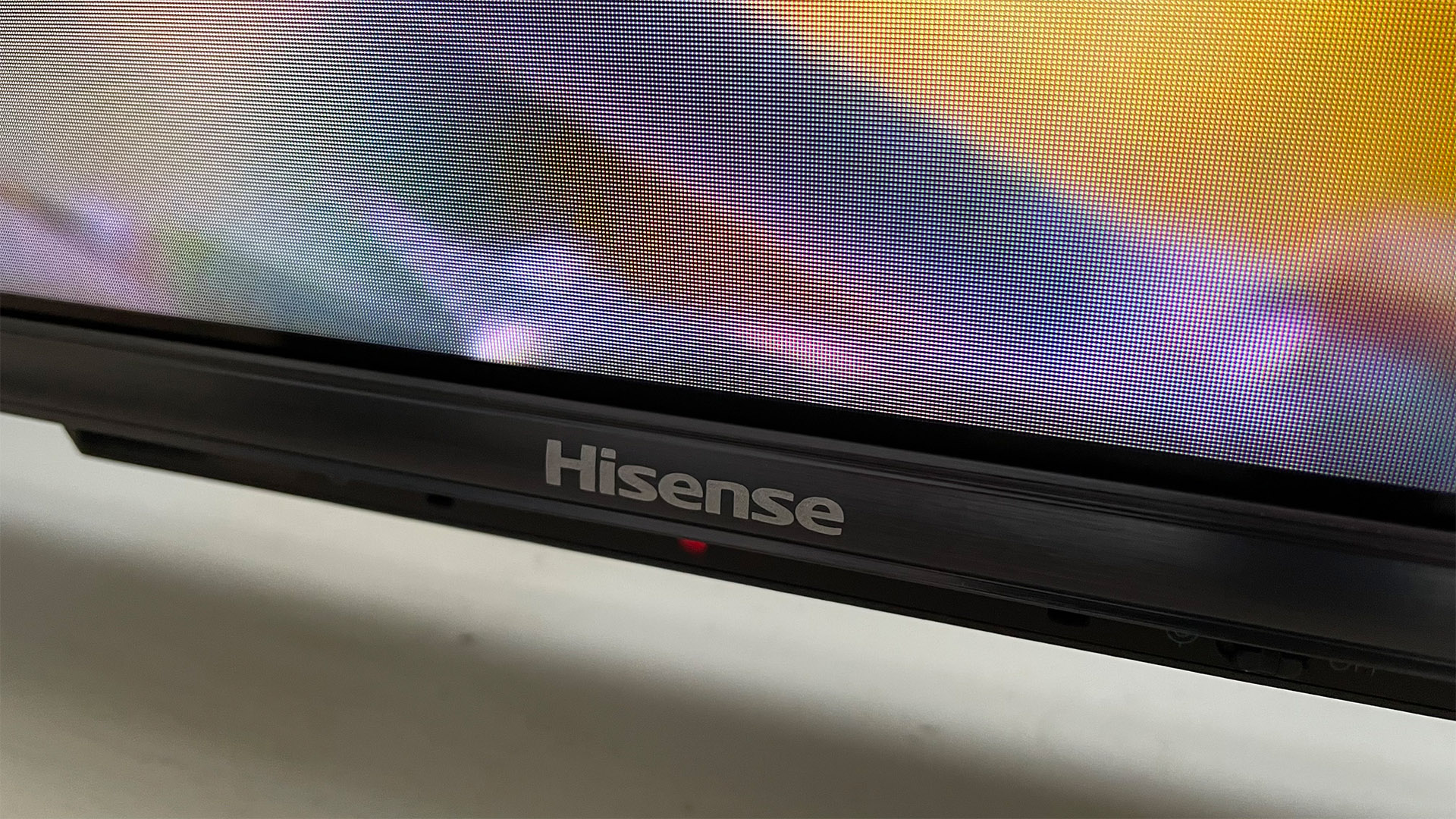
The U7K exhibits a little more backlight clouding than the absolute best Mini LED TVs do, and it doesn’t seem quite as bright as Hisense claims it should be. Despite actually sitting a step lower in Hisense’s 2023 range than last year’s U8H Mini LED, however, the U7K is overall a much, much better TV. Its black levels, brightness and, most of all, contrast all get much more value from its Mini LED lighting and a significantly better controlled local dimming engine, while its Quantum Dot colours are punchy and engaging.
It accompanies its punchy visuals with solid smarts and raucous sound, too – all for an unusually affordable price by Mini LED TV standards.
SCORES
- Picture 4
- Sound 4
- Features 4
MORE:
Read our review of the Sony XR-65X95L
Also consider the LG OLED55C3
Read our Sony XR-55X90L review
Best 65-inch TVs: the top options we've reviewed
What Hi-Fi?, founded in 1976, is the world's leading independent guide to buying and owning hi-fi and home entertainment products. Our comprehensive tests help you buy the very best for your money, with our advice sections giving you step-by-step information on how to get even more from your music and movies. Everything is tested by our dedicated team of in-house reviewers in our custom-built test rooms in London, Reading and Bath. Our coveted five-star rating and Awards are recognised all over the world as the ultimate seal of approval, so you can buy with absolute confidence.
